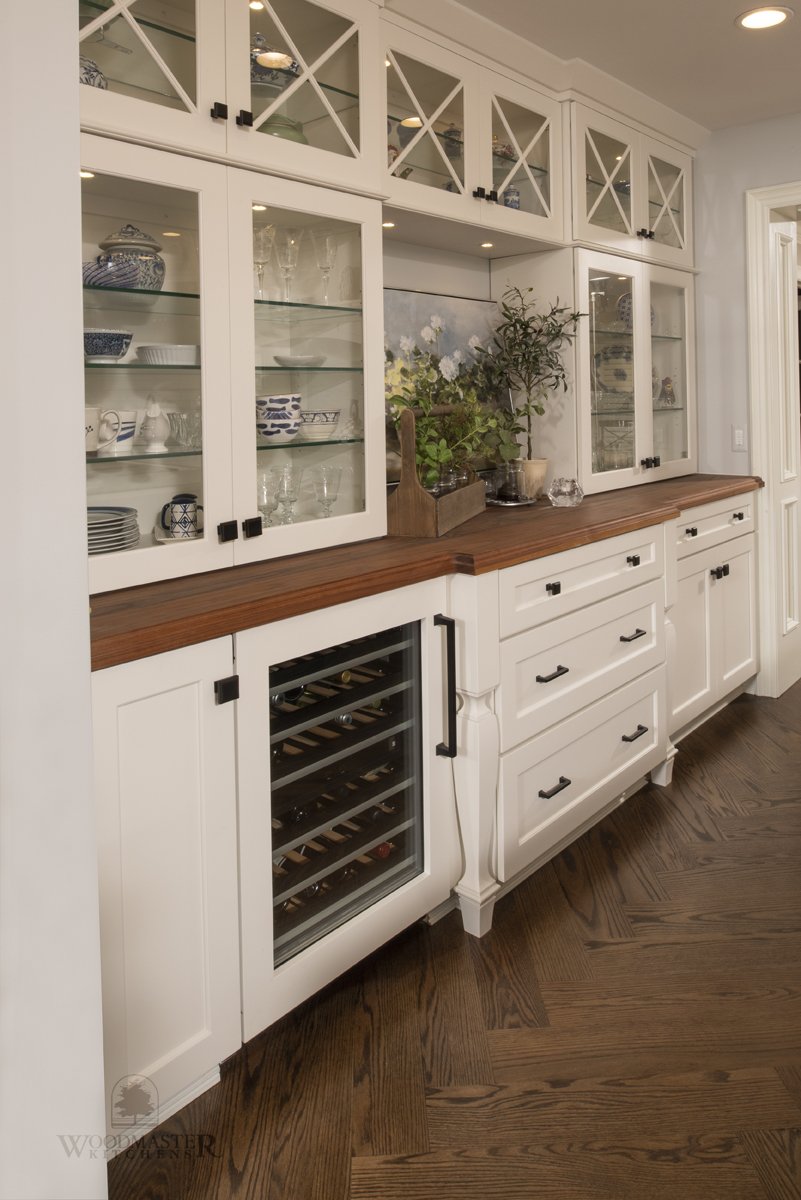Post Remodeling Home Care Part 1: Cabinetry and Wood Surfaces
Are you planning a kitchen design or bathroom remodeling project, or have you recently completed a home remodel? When embarking on this process, you typically spend hours poring over photographs, product samples, and color schemes to select the perfect design style to enhance your home. You also open your house to a design and remodeling professional, who will help you transform your home by bringing your design vision to life.
After the remodel is finished, the last of the tools and dust are cleared away, and you step back to admire your new space, what is the first thing you want to do? Cook a favorite meal or enjoy a soak in your new freestanding tub? Cleaning and maintenance may not top your post-remodel to-do list but it’s important to understand your new products and surfaces before you start using those spaces. Once you know how to keep your new surfaces clean and maintain them properly, you will be able to enjoy your beautiful kitchen or bath design for years to come.
Why is After Care Essential?
At Woodmaster Kitchens, we believe it is essential for our customers to have the knowledge they need to care for and maintain their chosen materials from day one. You’ve made an investment of time and money in your home and want to keep it looking like new for as long as possible. Our guide to post-remodeling home care has proven to be a valuable resource to clients in determining what products to use (and even more importantly what not to use) on their wood, laminate, stone, and other surfaces. We also offer advice on how to clean surfaces and the environmental factors that can affect them.
In the first part of our guide to post-remodeling home care, we focus on kitchen cabinets and wood surfaces like butcher block countertops and hardwood flooring. Here are our top tips for care and maintenance of these beautiful surfaces.
Cabinets
Kitchen cabinets and bathroom vanity cabinets define your room’s style, but they can also be prone to amassing grease and dirt if not cleaned regularly. They should be wiped clean daily to maintain their appearance and keep gunk from collecting, and then given a deep clean inside and out a couple times a year or as needed.
“Start as you mean to go on” should be your mantra when it comes to maintaining bathroom and kitchen cabinets. The best care is to keep cabinetry clean by wiping spills or splatters as they occur. Always use a clean, soft cloth and avoid anything harsh like scouring pads, abrasive sponges, or harsh cleaning solutions. It is also advisable to dust or vacuum panel ledges on a regular basis with a soft cloth or vacuum attachment.
If the finish has become badly soiled or smudged, use a cloth dampened in mild soapy water to remove dirt. First, wipe the surface with a clean damp cloth and then dry with a clean cloth using light pressure. Do not use vigorous rubbing on wood finishes as this tends to raise a high gloss and destroy the original effect that you carefully chose for your kitchen cabinet design.
Never use strong soap, detergent, or liquid wax cleaners with dirt cutting agents on wood finishes. A quality wood care product such as Johnson's Guardsman is an ideal choice that can be used to restore the original lustre of the finish. Plastic laminate cabinet care differs from wood cabinets and will be covered separately in a later blog. Check our blog page regularly for updates!
It is important to note that during the first year after your remodel, you will find that the cabinet doors may go out of adjustment and the countertop caulking may separate from the wall. This is all part of the drying out and settling of all your new materials. At the time of installation, all adjustments are made, the countertops are caulked, and the seams are filled. Adjustments due to settlement are part of homeowner maintenance and are not covered under warranty. However, if this type of maintenance is not something you are comfortable undertaking yourself, Woodmaster Kitchens will make a service call to do these repairs for a minimal charge.
Wood or Butcher Block Countertops
Nothing beats the natural beauty of wood, which can be incorporated into a kitchen design in many ways. Wood or butcher block countertops are a popular choice, as they provide a stunning surface that is a warm counterpart to popular white, gray, blue, or even black cabinetry. Wood surfaces are durable but require a special care routine, so it is important to understand this when choosing a wood countertop and even more important to be prepared when your remodel is complete.
Wood is a living product and will always react to humidity changes in the air. It is important that the relative humidity in the room is approximately 50%, which is the normal indoor humidity with a temperature of 68 ̊F. As wood releases and absorbs humidity, it contracts and expands. Indoor as well as outdoor humidity content varies according to the time of year.
At Woodmaster Kitchens, we furnish wood tops with a factory-applied oil finish. To maintain this, the wood top surfaces should be oiled periodically to make the wood less absorbent and to reduce staining. Generally, when the surface of the wood top appears white, that is an indication that the surface may need to be re-oiled.
Several oils often suggested for wood tops are in fact not ideal choices and therefore NOT recommended by our team. These include:
Mineral oil is often suggested for wood countertops, but it may “gunk up” or rise to the surface after a time.
Linseed oil is not recommended because of its toxicity.
Food grade oils (such as cooking oil) are often recommended but are not ideal because they are subject to rancidity.
So, what are the best choices for oiling wood countertops? A good choice is FDA-approved tung oil. It is easy to apply, is practically odorless, and, when rubbed sparingly in several layers, leaves a silk-like finish with no residue. A good source for tung oil finished products is:
Mohawk Finishing Products
Route 30
Amsterdam, NY 12010
Experts recommend scrubbing the surface periodically with coarse salt and then re-oiling. Severe stains can often be removed using fine sandpaper or steel wool.
Hardwood Flooring
Wood flooring is a classic choice that will never go out of style. While it is prone to scratching and subject to fading in sunlit areas, hardwood floors can also be refinished over and over. This means that with proper care and maintenance they can last for decades or longer, and you can refresh the look of hardwood by refinishing in a different shade.
Proper care is essential to maintain the look and beauty of hardwood floors. Here are several top tips for taking care of your new hardwood floors:
First, do not clean your new wood floors with water or detergent during the first week.
Place floor mats at exterior doors to trap sand and grit from incoming traffic.
Use area rugs in pivot areas, such as at the end of the stairs, near doorways, or in front of the sink.
All rugs should allow the floor to breath. For this reason, avoid rubber-backed or other non-ventilated rugs. When rugs are impractical, periodically check the floor for wear.
Sweep or vacuum your wood floor daily and damp wipe as needed.
For basic cleaning, water on a well wrung out rag or mop is all that is needed.
Or use hardwood floor cleaner for a more thorough cleaning or on stubborn spots, rubber heal marks, or sticky spills.
Do NOT use wax, furniture dusting products, oil soaps, or harsh cleaning products. They can dull the finish and make future cleaning and refurbishing difficult.
Put floor protector pads on all furniture legs. Clean the protectors on a regular basis to remove any embedded grit and replace them as they become worn.
The finishes used on hardwood floors are resistant to most common chemicals in a home, but it is advisable to always clean spills at once.
Sunlight can produce a color change around a piece of furniture or a rug. If the object is moved, over time the finish should blend to one color again.
Avoid high heels as they may cause damage to the floor!
The floor may be re-coated at any time with a new coat of finish if you feel it has lost its lustre or is starting to show wear.
Maintain a constant humidity level in the home throughout the year.
Make Maintenance a Habit
Understanding your new surfaces and how to maintain them is essential. From the moment you start living in newly remodeled kitchen or bathroom, put in place a daily, weekly, monthly, and annual cleaning and maintenance routine to protect your investment in your home.
Regular cleaning is a simple habit to develop and doesn’t take much time. Best of all, it will save you hassle in the long run by cleaning up spills and splatters as they happen. Ongoing maintenance can become part of your routine, incorporated into semi-annual Spring Cleaning and Fall Clean Up days. You will thank yourself as you enjoy your beautiful home for years to come!






